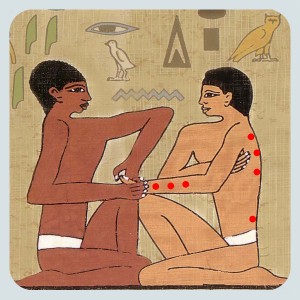 The year was 1983 and the oldest national association of massage practitioners was about to change the face of an industry by turning “massage” into “massage therapy.” This is the story of what led up to that moment.
The year was 1983 and the oldest national association of massage practitioners was about to change the face of an industry by turning “massage” into “massage therapy.” This is the story of what led up to that moment.
The association making this pivotal shift was founded in 1943 by a group of 29 graduates of the College of Swedish Massage in Chicago. Originally calling itself the Association of Masseurs and Masseuses, fifteen years later it had changed its name to the American Massage & Therapy Association (AM&TA). Now, in 1983, the group was poised to take the conjunction “and” out of the middle of their name and become what we know today as simply the American Massage Therapy Association (AMTA).
The rationale for the name change was simple–to address the two primary forces that had always plagued the growth of massage: public perception and economics.
Managing the image of therapeutic massage has always been a public relations nightmare. There are only two occupations where skilled touch is the primary modality of service delivery. One is legal and (in most places) the other is not.
The confusion in the public mind between “adult entertainment” massage and “therapeutic” massage has been around in one form or another for centuries. Indeed, the mere mention of the word “massage” in 1983 was enough to provoke what was then called “the snicker response,” as word evoked images of “masseuses” in skimpy outfits plying their trade late into the night in sleazy massage “parlors”.
While the mass media served up this image in large portions, it also offered a second association in movies and television: that of massage as a luxury service for the rich and famous. If one got past the first association, the second inevitably got in the way of people identifying with massage because the service was, quite simply, unaffordable for the vast majority of Americans.
So, in the early 1980’s the thought was, let’s reposition massage in the public mind and kill two birds with one stone. If massage could be turned into a legitimate health care profession, then people would no longer presume that massage practitioners were prostitutes. Likewise, as a health care service, massage could be covered by third party payments, as was already the case in some Canadian provinces.
And so, the name was changed and what was once two, massage and therapy, became one—massage therapy. In the next article, I will analyze the impact of this well-intentioned decision and argue that this minor alteration solidified a strategy that has had only limited success and, in some ways, has actually inhibited the effort to bring skilled touch to the masses.




Pingback: Moving from Acceptability to Accessibility | |
Pingback: MTBOK: Missed Opportunity? | |
Pingback: Is it time for massage to embrace touch?
Pingback: The Canyon Ranch Think Tank | |
Pingback: Viewing Massage Through a Holonic Lens | |
Pingback: |
Pingback: Moving Massage from Acceptability to Accessibility
Pingback: Is it time for massage to embrace touch?
Pingback: Viewing Massage Through a Holonic Lens |
Do you have any history of swedish school of massage, Chicago from 1942, 1943, 1945?
(My mother attended college then)
Hi Linda, I checked the best history book we have (The Emergence of Massage Therapy in North America by Patricia Benjamin) and discovered that four pages on the College of Swedish Massage in Chicago, which operated from 1902 until the 1950s. While out of print, you can still get a $25 e-print version of the book here:
https://sutherland-chan.com/curties-overzet-publications/
The book is a must-have for every massage professional.
Hope this info helps.
~David